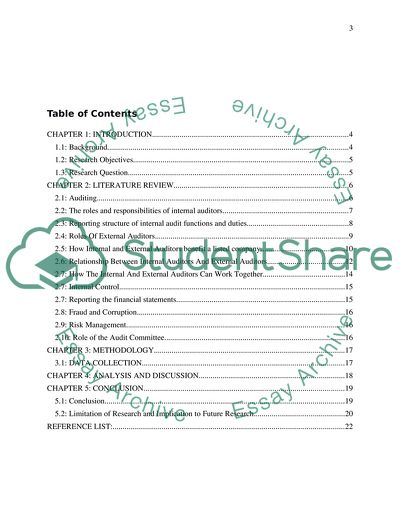Cite this document
(How to Synergize the Works of Internal Auditors and External Auditors Research Paper, n.d.)
How to Synergize the Works of Internal Auditors and External Auditors Research Paper. Retrieved from https://studentshare.org/finance-accounting/1836708-a-study-of-how-to-synergize-the-works-of-internal-auditors-and-external-auditors-to-listed-company
How to Synergize the Works of Internal Auditors and External Auditors Research Paper. Retrieved from https://studentshare.org/finance-accounting/1836708-a-study-of-how-to-synergize-the-works-of-internal-auditors-and-external-auditors-to-listed-company
(How to Synergize the Works of Internal Auditors and External Auditors Research Paper)
How to Synergize the Works of Internal Auditors and External Auditors Research Paper. https://studentshare.org/finance-accounting/1836708-a-study-of-how-to-synergize-the-works-of-internal-auditors-and-external-auditors-to-listed-company.
How to Synergize the Works of Internal Auditors and External Auditors Research Paper. https://studentshare.org/finance-accounting/1836708-a-study-of-how-to-synergize-the-works-of-internal-auditors-and-external-auditors-to-listed-company.
“How to Synergize the Works of Internal Auditors and External Auditors Research Paper”, n.d. https://studentshare.org/finance-accounting/1836708-a-study-of-how-to-synergize-the-works-of-internal-auditors-and-external-auditors-to-listed-company.


